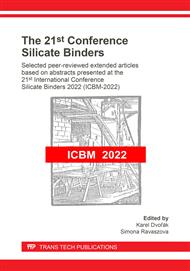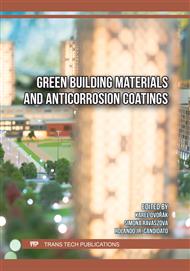p.27
p.33
p.41
p.47
p.53
p.61
p.67
p.77
p.89
Verification of the Electrical Impedance Method for Measuring the Humidity of Silicate Material
Abstract:
Measuring humidity in building materials is of great importance in assessing the condition of materials and also in building diagnostics, as the presence of humidity affects their physical and thermal insulation properties. In the construction industry, the use of non-destructive electrical measurement methods for testing the physico-chemical properties of materials is common and especially the electrical conductivity of materials is significantly affected by humidity.
Info:
Periodical:
Pages:
53-59
Citation:
Online since:
October 2023
Authors:
Price:
Сopyright:
© 2023 Trans Tech Publications Ltd. All Rights Reserved
Share:
Citation:



